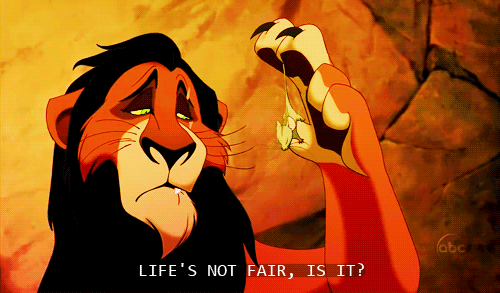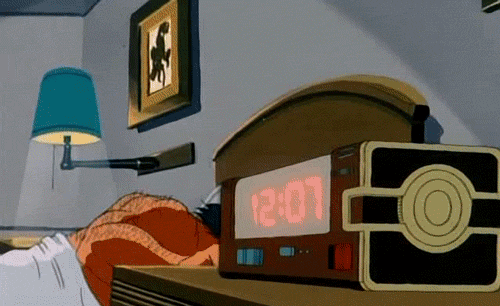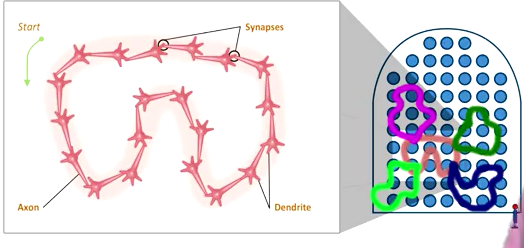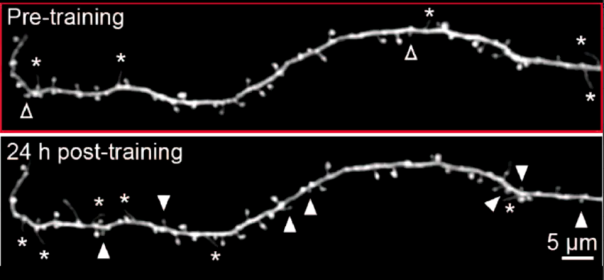“The experiments were abandoned. No further attempt was made to teach children the length of the Nile in their sleep. Quite rightly. You can’t learn a science unless you know what it’s all about.
“Whereas, if they’d only started on moral education,” said the Director, leading the way towards the door. The students followed him, desperately scribbling as they walked and all the way up in the lift. “Moral education, which ought never, in any circumstances, to be rational.”
… The Director pushed back the switch. The voice was silent. Only its thin ghost continued to mutter from beneath the eighty pillows.
Whether it’s your dream come true or the last straw before you flee to Wyoming and hole up with a pile of tin hats and your best girl, Bessie…

… you have to admit, everyone wants to know if hypnopoedia can be done.
“So- is it possible?” you ask.
“Dude. I’m a blogger,” I respond.
Still, one thing I can do is lay out some of the arguments for both possibilities… and then maybe argue a little more.
Yea: Dream within a Dream
No, I’m not referencing Inception, you plebes. (Though if you haven’t seen it, go watch it right now. Now. And pick up a volume of Edgar Allen Poe on your way.)
I’m talking about the idea that the things you listen to while you sleep can be incorporated into your long-term memory while you’re dreaming- an idea so exciting, there’s a whole industry built around the idea that it might work.
So if you were too busy slaughtering aliens in Call of Duty to study for your zoology midterm, you can just pop a review-cassette in the CD player, adjust your headphones, and nod off to dreams of electric sheep.
(If you were too busy bouncing around the ether as a disembodied soul to even know what a cassette player is, you should probably watch this video… Actually, watch it anyway.)
From hypnpoedia, it’s only one short step to Matrix-style cortical information downloads!
Nay: In Your Dreams
Learn while sleeping? For serious? If you think that’s possible, I have special serum for ya- guaranteed to add eight inches! (To your cerebellum- get your mind out of the gutter.)
While hopefuls will point to a tradition of sleep-learning going back to the Egyptians, and alarmists will quote Huxley and Clockwork Orange ’til you drop, skeptics point out that pop views of sleep learning are the techie equivalent of sticking your Biology book under your pillow and attempting to learn via diffusion. (Btw- no judgment if you’ve ever tried that; we’ve all been there.) It’s just not realistic.
Apologies to all of you potential evil overlords out there, but no- you cannot brainwash people in their sleep. Not even minions. As Roy Cox & Co. pointed out in their 2014 report, while you can process external stimuli during certain deep sleep slow oscillation phases, research suggests that despite the application of stimuli during both oscillatory up and down states, “no enduring memories were formed.” It’s a sad day for budding supervillains everywhere.

The Middle Path
So if sleep turns your brain into the glymphatic equivalent of a heavy rinse cycle, and research has shown that we honestly don’t process the things our significant other yells at us when we’re asleep, then how can you really, truly, learn new things while you sleep? Well, I’ve got some good news and bad news.
Good news: There are some researchers who do believe you can learn things in your sleep.
Bad news: They all agree that you have to learn them while you’re awake, first.
Bear with me- it’s not as bad as it may seem.
We’ve already learned from Prof. Oakley’s class (and previously-discussed research) that sleep is necessary to bolster our cognition for the monumental task of dealing with daily life. Insufficient sleep leads to a build-up of metabolic toxins in the brain, impairing attention, language, reasoning, learning, memory… pretty much you name it, it’s impaired. But does this impairment due to insufficient sleep necessarily mean that sleep enhances cognition?
Susanne Diekelmann says no. She quotes A. Sandberg’s definition of cognitive enhancement as “the amplification or extension of core capabilities of the mind,” and notes that sleep- on its own- does not accomplish this. Sleep, she emphasizes, is known to facilitate memory consolidation, i.e., to strengthen and stabilize new memories that were acquired before sleep. Please note both the bolded and bolded-underlined portions of that sentence. You have to learn on your own before you sleep. There’s just no way around that, folks.

There may, however, be ways to use sleep to facilitate both stronger consolidation and easier retrieval of things you learn before you sleep. Let’s discuss two broad approaches to this proposition.
The first approach is the flower-child, eat-organic, Whole-Foods-friendly approach to sleep enhancement that we’ve learned in Prof. Oakley’s class. You want to learn more efficiently and effectively? Space it out. Specifically, in this case, time your learning in relation to your sleep cycles. In a 2011 study on sleep and human learning, Bryce Mander (et al., as always) found that introducing short naps before learning new information fosters the initial acquisition and encoding of new episodic memory traces. I think it’s worth pointing out here that the participants in Mander’s study were in their late teens and early twenties, providing even more support for my campaign to institute work-place nap times. (Nap are no longer just for kids!)
After the nap, study like a fiend (maybe using that Pomodoro technique)… and then go ahead and sleep again. Whaaat? Yes! Give me ALL THE SLEEP. Diekelmann points out a number of studies have shown that sleeping shortly after encoding (e.g. studying) “benefit the consolidation of fresh memories to preserve these memories for the long-term and protect them from subsequent interfering inputs.” Snazzy.
So that’s the au naturale way of doing things; now let’s talk about the evil scientist/Lex Luther/dystopian government forces in unmarked black helicopters approach.

Now, this second approach is complex enough (and thrillingly cool-creepy enough) to merit its own post, which I will hopefully have up by tomorrow. (::pause for incredulous laughter::) But here’s the gist- approach #2 focuses on manipulating memory and/or sleep directly. Diekelmann points out three different methods researchers are exploring in order to achieve this direct manipulation:
Manipulation of Memory Reactivation During Sleep
Manipulation of Sleep Specific Brain Oscillations
Manipulation of Neurotransmitter Systems
(Grab hold of Bessie, y’all.)
I’m going to go into all three of these approaches in the next blog post, including tips on how you might be able to try them at home. I will not be going into the ethics of attempting such endeavors (yes, there are ethical conundrums here besides “oh, KEWL”), as that is another subject deserving of its own post sometime in the future.
Unfortunately, this means that the “Morning People Are Mutants” post is going to be pushed back again, but I have started writing it. As additional appeasement for the delay, I will say that the post will also discuss the ways in which mut… I mean, “morning people”… are more susceptible to some of the brainwashing… I mean, “enhancement”… techniques that I will be discussing.
Thanks for reading! Sleep well…
References
Cox, R., Korjoukov I., de Boer M., Talamini L.M. Sound asleep: processing and retention of slow oscillation phase-targeted stimuli. 2014 Jul 7;9(7):e101567. doi: 10.1371/journal.pone.0101567. eCollection 2014. See: http://ow.ly/AAq8M
Diekelmann. Sleep for cognitive enhancement. Front Syst Neurosci. 2014; 8: 46. Published online Apr 2, 2014. doi: 10.3389/fnsys.2014.00046 See: http://ow.ly/AGMtx
Ellenbogen J. M., Hulbert J. C., Jiang Y., Stickgold R. (2009). The sleeping brain’s influence on verbal memory: boosting resistance to interference. PLoS One 4:e4117 10.1371/journal.pone.0004117 See: http://ow.ly/AGGbL
Gais S., Lucas B., Born J. (2006b). Sleep after learning aids memory recall. Learn. Mem. 13, 259–262 10.1101/lm.132106
Huxley, Aldous. Brave New World, Chapter 2. See: http://www.huxley.net/bnw/two.html
Mander B. A., Santhanam S., Saletin J. M., Walker M. P. (2011). Wake deterioration and sleep restoration of human learning. Curr. Biol. 21, R183–R184 10.1016/j.cub.2011.01.019 See: http://ow.ly/AGAAn
Payne J. D., Chambers A. M., Kensinger E. A. (2012a). Sleep promotes lasting changes in selective memory for emotional scenes. Front. Integr. Neurosci. 6:108 10.3389/fnint.2012.00108 See: http://ow.ly/AGGZx
Payne J. D., Tucker M. A., Ellenbogen J. M., Wamsley E. J., Walker M. P., Schacter D. L., et al. (2012b). Memory for semantically related and unrelated declarative information: the benefit of sleep, the cost of wake. PLoS One 7:e33079 10.1371/journal.pone.0033079 See: http://ow.ly/AGHCL
Images
Bessie the Shotgun, Volpin Props See: http://ow.ly/AGSl8
Black Helicopters Not Allowed, regmedia.co.uk, See: http://ow.ly/AGJHr
Computer Head, See: previous post
Event-related potentials during wakefulness… graph. See: http://ow.ly/AAq8M
Scar gif, See: http://www.tumblr.com/tagged/lifes-not-fair









